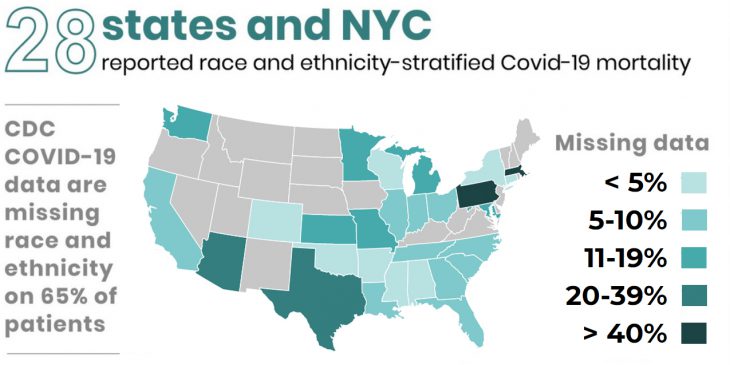As the United States continues to battle COVID-19, disturbing racial and ethnic disparities have been reported in relation to many aspects of the pandemic. Even though Black and Latinx populations are potentially at higher risk for infection and adverse outcomes, new research published this week in the Journal of General Internal Medicine found that only 28 states include race and ethnicity data in their mortality reporting as of April 21, 2020.
“This lack of complete, accurate information may be contributing to significant underestimates of coronavirus-related disparities,” said study author Utibe Essien, M.D., M.P.H., of the University of Pittsburgh School of Medicine Division of General Internal Medicine.
Dr. Essien and study lead author Cary Gross, M.D., of the Yale School of Medicine, examined publicly available COVID-19 mortality data by state and found that the extent of COVID-19-related racial and ethnic disparities varies significantly by state. Even in states that report these factors with their COVID-19 mortality data, it was often incomplete.

When data for Black, Latinx and White populations was adjusted for age, the risk of COVID-19-related death was significantly higher for the Black and Latinx individuals.
Black Americans were more than three times more likely to die of COVID-19 than White Americans, and the mortality risk for Latinx Americans was about double that of Whites.
“Black and Latinx populations tend to skew younger, and this research emphasized the importance of adjusting data for age to adequately account for disparities in these groups,” Dr. Essien said. “Moving forward, public health officials, health care systems and policymakers need to work together to ensure we have the data we need to fully investigate and address racial and ethnic disparities in COVID-19 mortality.”








